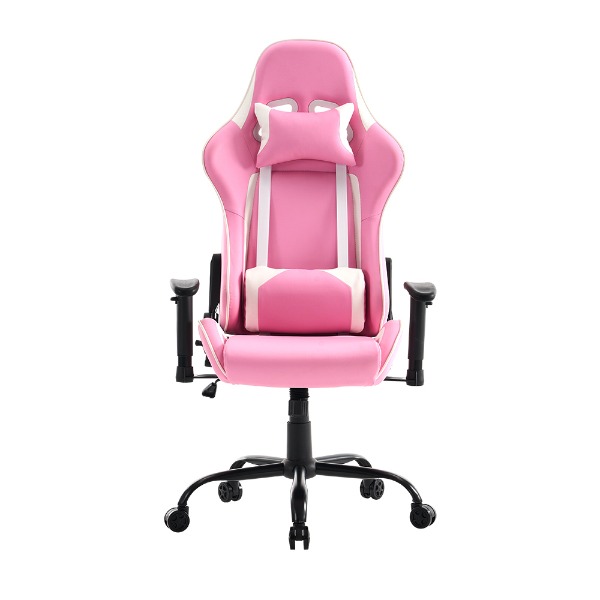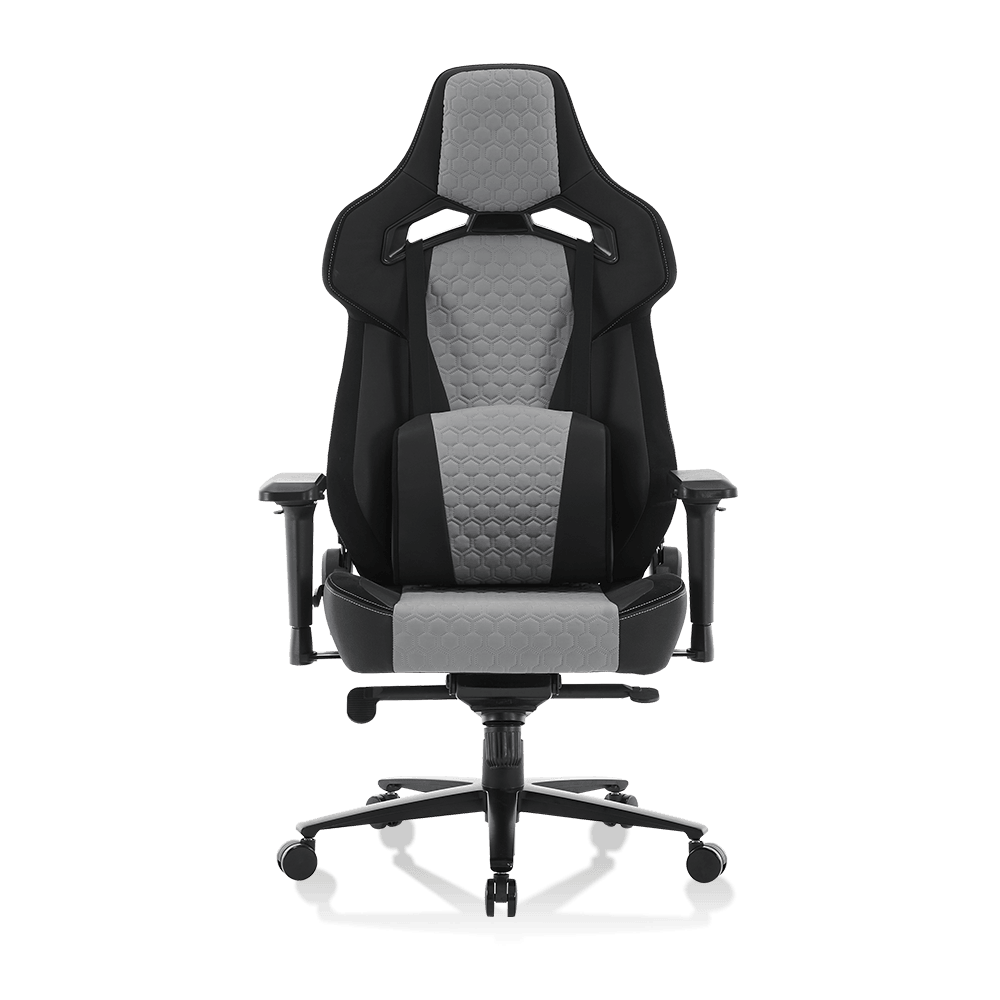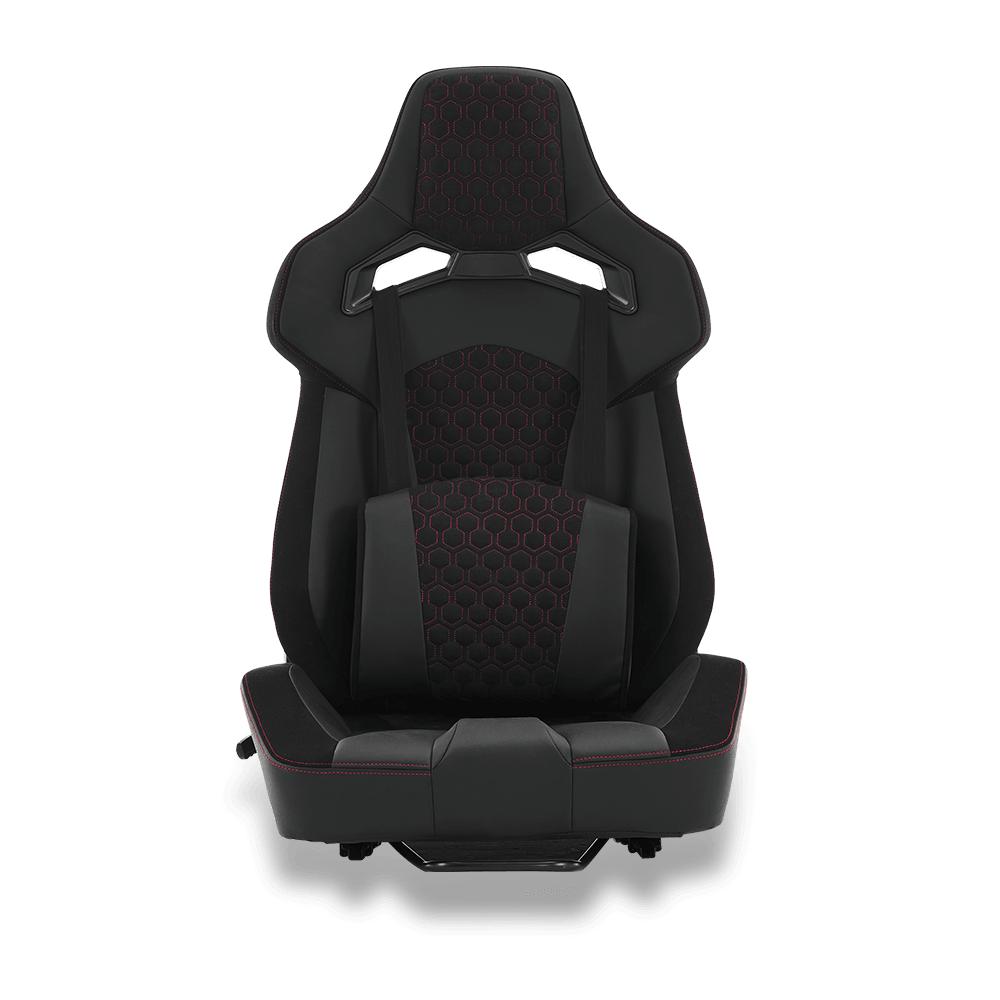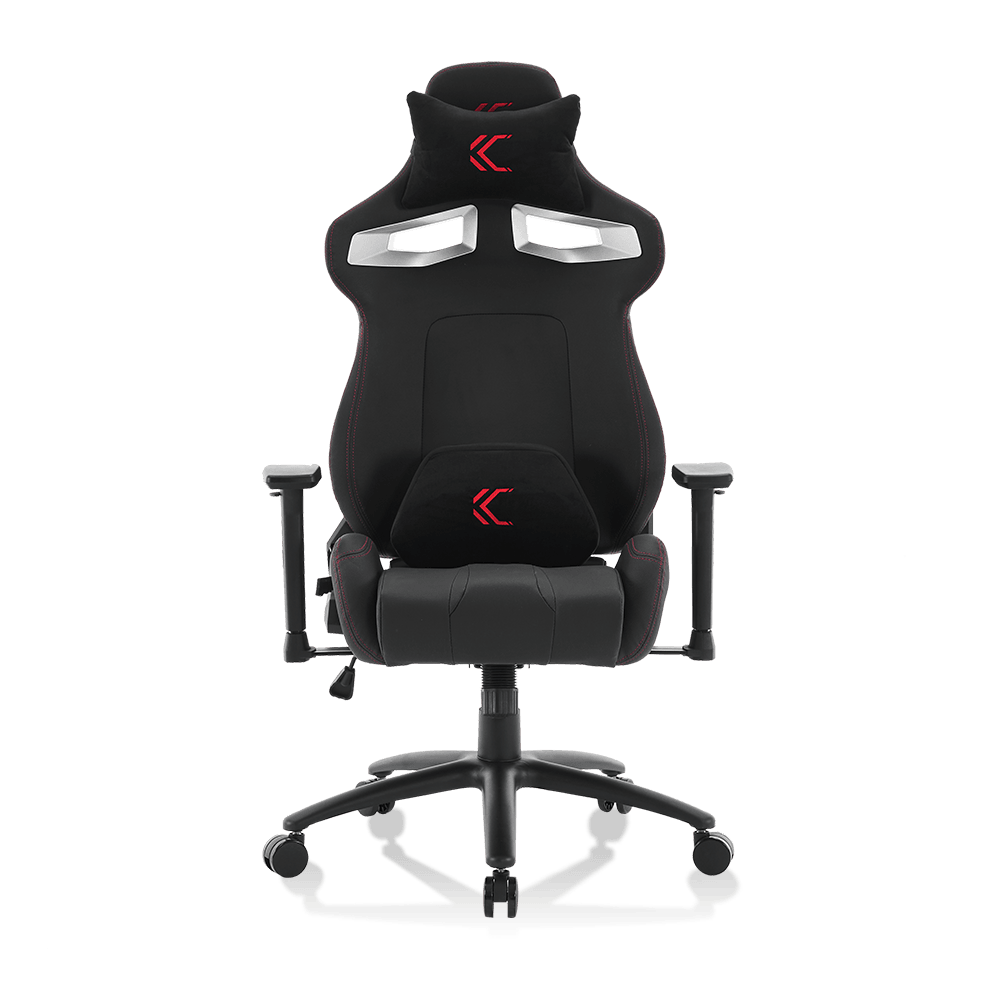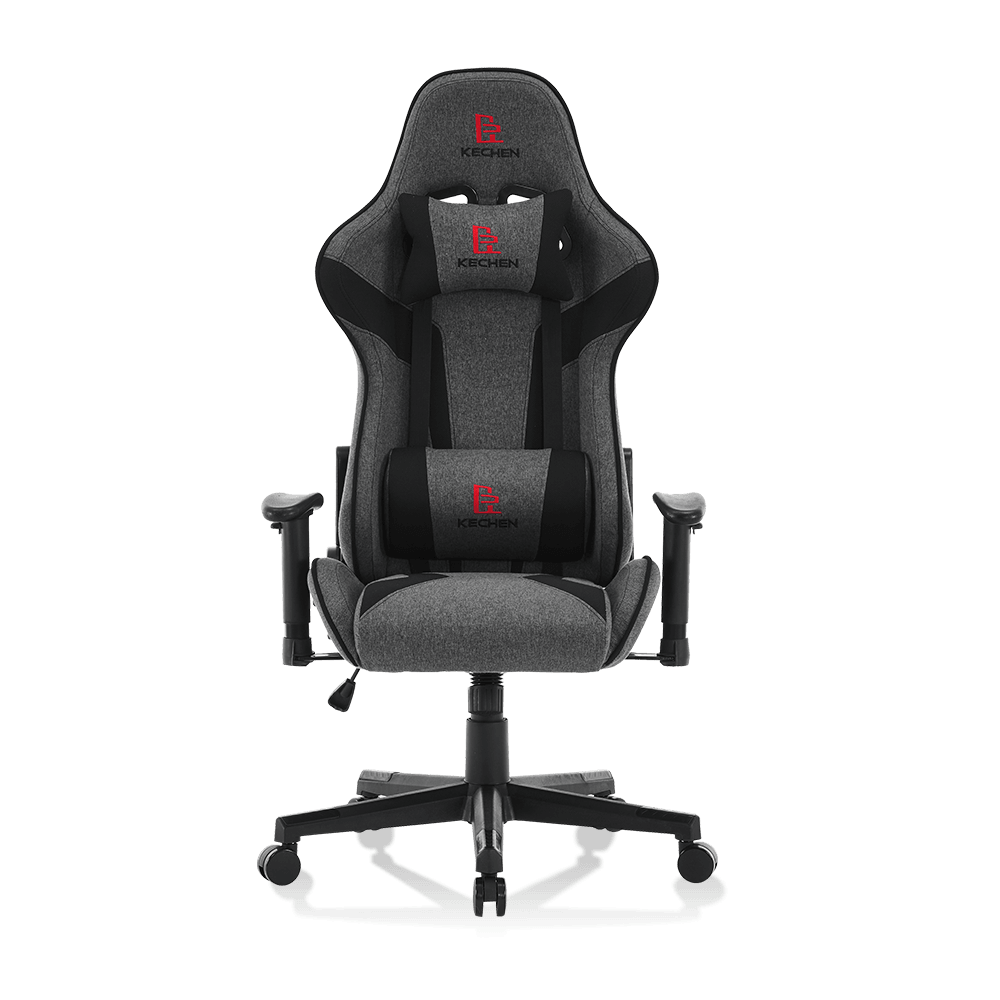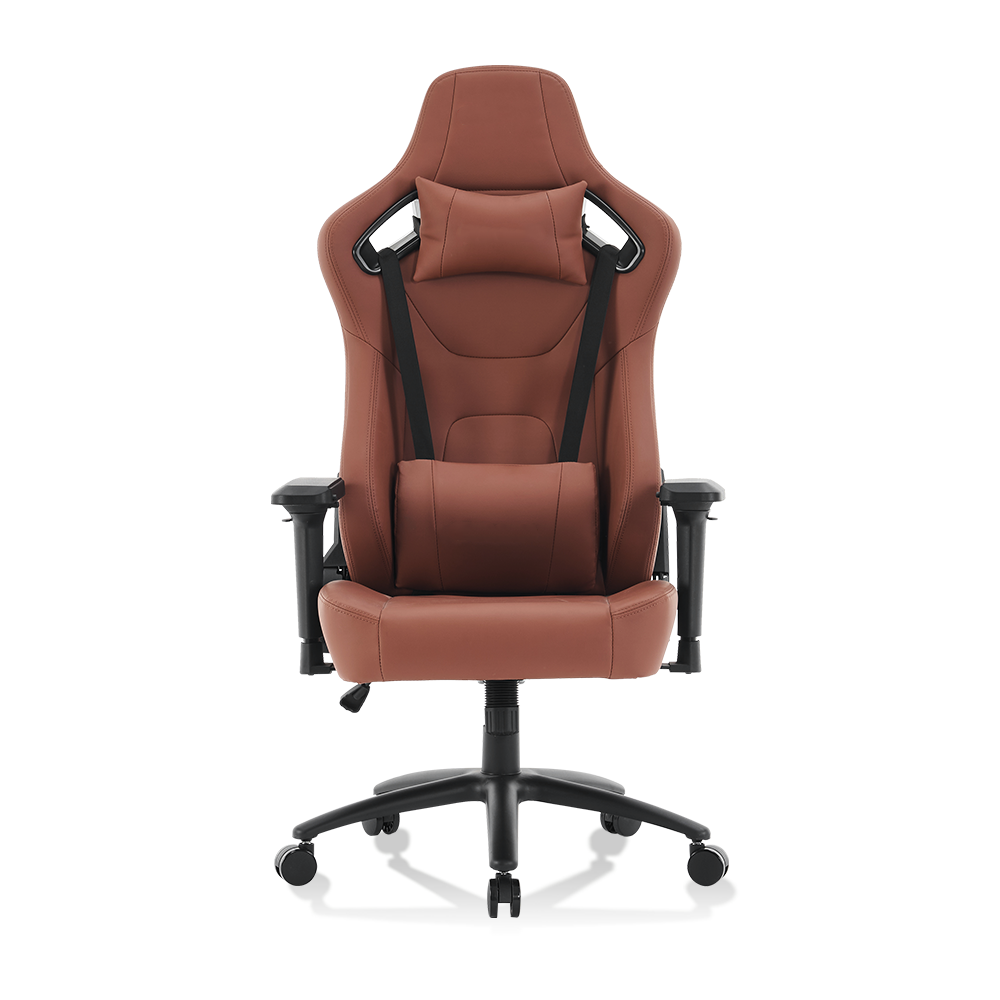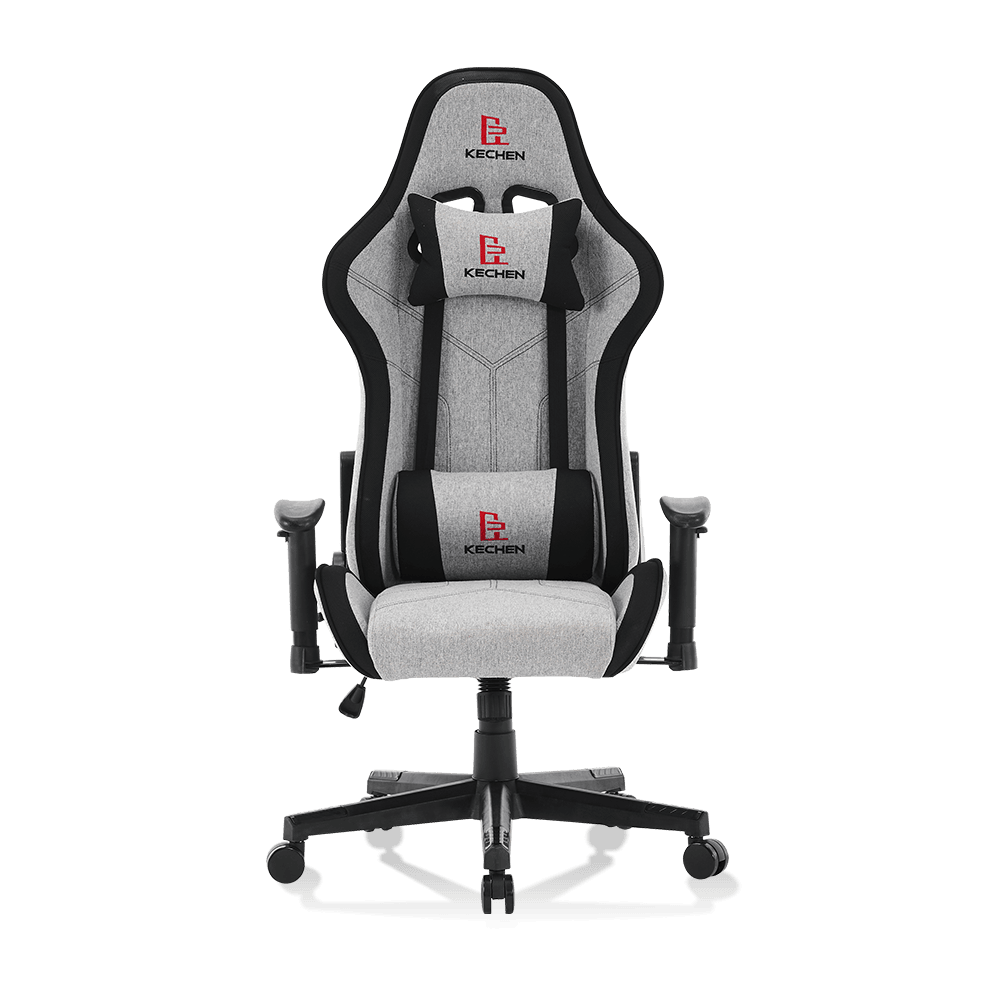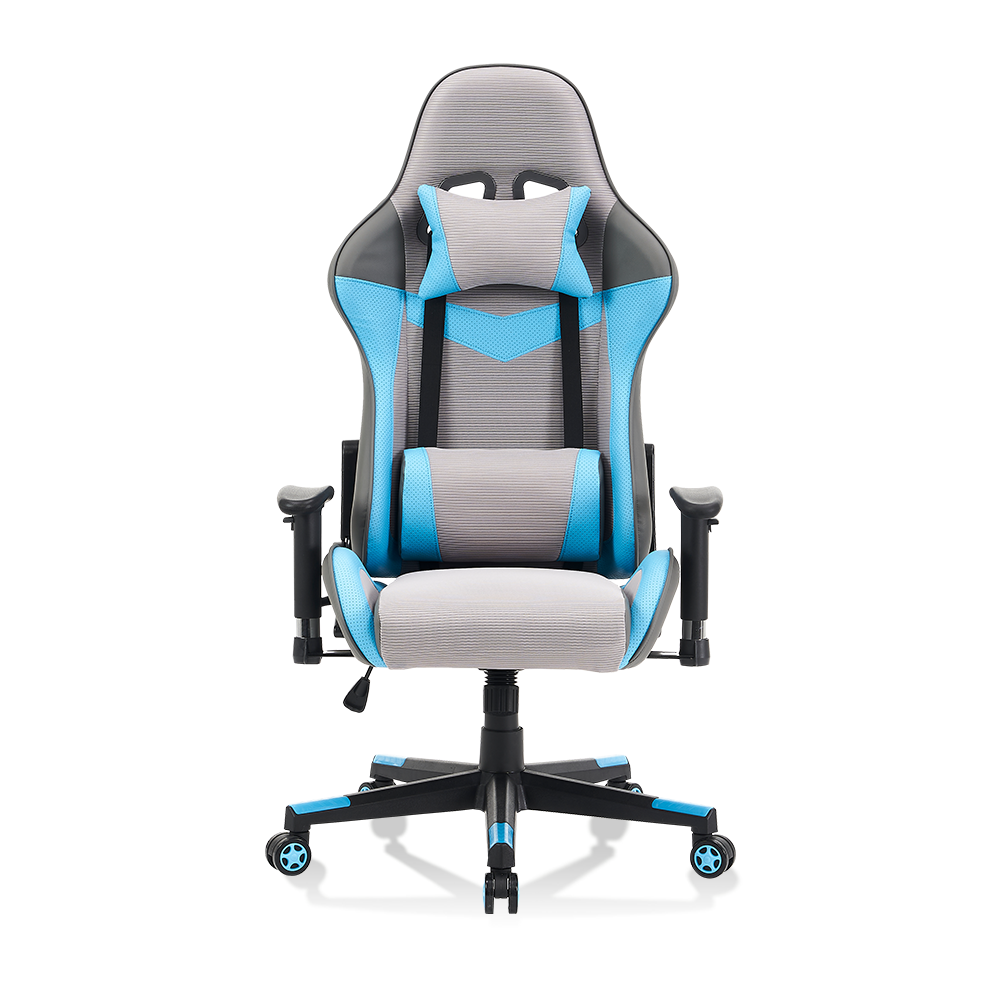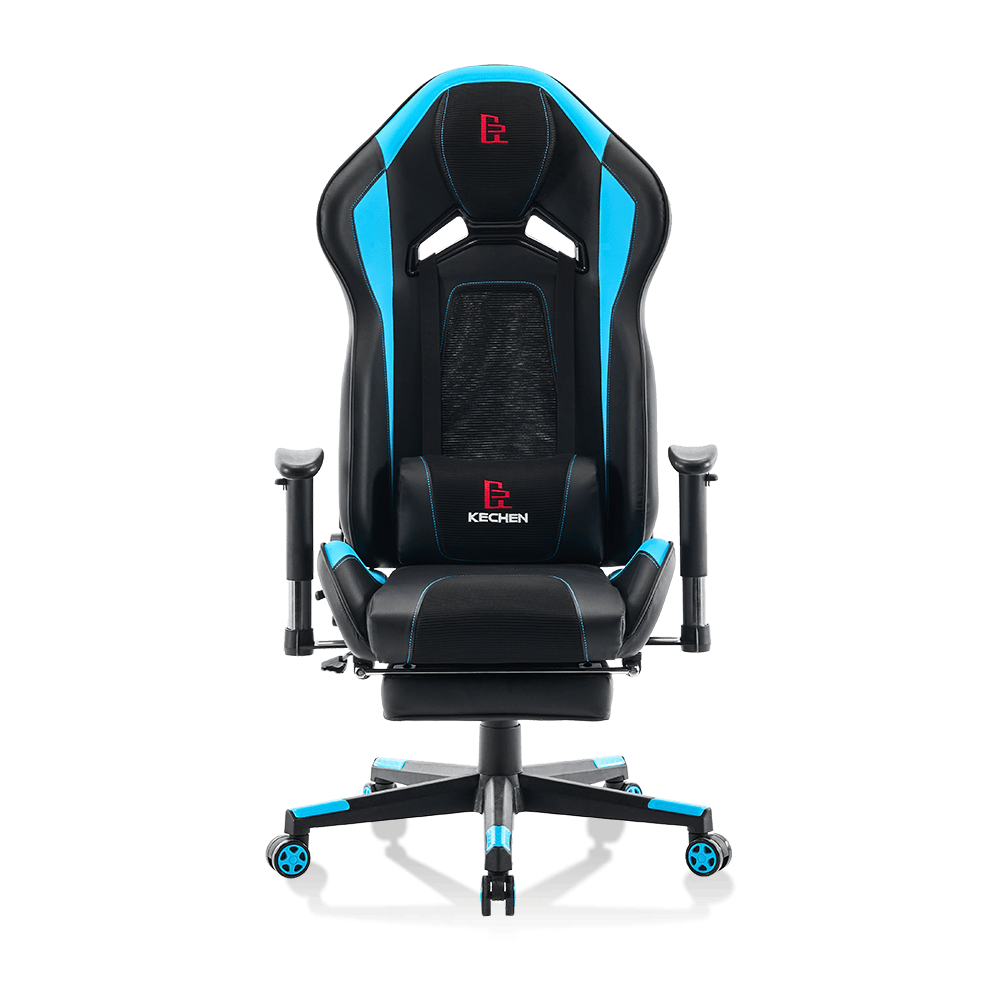- 1 Introduction to Ergonomic Gaming Chairs
- 2 Key Differences Between Affordable and Premium Options
- 3 Who Should Consider Affordable Ergonomic Gaming Chairs?
- 4 When Is Investing in Premium Ergonomic Gaming Chairs Justified?
- 5 Making the Right Choice: Decision Factors to Consider
- 6 FAQ
- 6.1 What makes a gaming chair truly ergonomic?
- 6.2 How often should I replace my ergonomic gaming chair?
- 6.3 Can ergonomic gaming chairs really help with back pain?
- 6.4 Are there specific features I should prioritize for long gaming sessions?
- 6.5 How much should I budget for a quality ergonomic gaming chair?
Introduction to Ergonomic Gaming Chairs
In the world of gaming and extended computer use, the importance of proper seating cannot be overstated. Ergonomic gaming chairs have emerged as essential equipment for both casual and professional users who spend significant time at their desks. These specialized chairs are designed to support the natural curvature of the spine, promote healthy posture, and reduce the physical strain associated with long sitting sessions. The fundamental difference between standard chairs and ergonomic gaming chairs lies in their thoughtful design approach that prioritizes user health and comfort over mere aesthetics. While all ergonomic chairs share these basic principles, the market offers a wide spectrum ranging from budget-friendly options to high-end premium models, each claiming to provide the best solution for your seating needs. Understanding the real differences between affordable and premium ergonomic gaming chairs requires examining multiple factors including construction quality, material durability, adjustability options, and long-term health benefits that ultimately determine whether the investment is justified for your specific situation and requirements.
- The evolution of gaming chairs from basic seating to advanced ergonomic solutions
- How proper ergonomics impact gaming performance and overall health
- Key indicators of a truly ergonomic design beyond marketing claims
- The relationship between price points and actual functional value in gaming chairs
- Why the debate between affordable and premium options matters for different user profiles
Key Differences Between Affordable and Premium Options
When comparing affordable and premium ergonomic gaming chairs, the distinctions extend far beyond mere price tags. Budget-friendly options typically utilize simpler construction methods, standard-grade materials, and basic adjustment mechanisms that provide fundamental ergonomic benefits without advanced features. These chairs often incorporate essential lumbar support and basic height adjustments but may lack the fine-tuning capabilities of their premium counterparts. Mid-range chairs strike a balance between cost and functionality, offering improved materials and additional adjustment options while remaining accessible to most consumers. Premium ergonomic gaming chairs represent the pinnacle of seating technology, featuring high-density memory foam, premium leather or specialized fabric coatings, advanced lumbar support systems with multiple adjustment points, and often incorporating innovative materials that enhance both comfort and durability. The construction quality in premium chairs typically includes reinforced frames, higher-quality mechanisms, and more rigorous testing procedures to ensure long-term reliability. Perhaps most importantly, premium chairs often undergo extensive research and development involving orthopedic specialists to create seating solutions that actively promote spinal health during extended use periods.
- Material quality variations across different price segments
- Construction techniques and durability expectations
- Warranty coverage and customer support differences
- Design sophistication and aesthetic considerations
- Technological integrations and innovative features
Material Quality and Durability Comparison
The materials used in affordable ergonomic gaming chairs with lumbar support significantly differ from those in premium models, directly impacting both comfort longevity and overall value proposition. Budget-conscious options typically utilize polyurethane leather, basic mesh fabrics, and standard density foam that provide adequate comfort for occasional use but may show signs of wear more quickly. These materials often lack breathability and may cause discomfort during extended gaming sessions. Mid-range chairs frequently incorporate hybrid materials, improved padding densities, and better stitching techniques that enhance durability while maintaining reasonable pricing. Premium chairs excel in material selection, often featuring genuine leather, advanced mesh systems with varying tension zones, high-resiliency foam that maintains its shape for years, and specialized cooling fabrics that regulate temperature during long sessions. The frame materials also differ substantially, with affordable chairs using standard steel or aluminum while premium options often incorporate reinforced or composite materials that provide superior stability and weight capacity. These material differences directly translate to varying product lifespans, with premium chairs typically lasting two to three times longer than their affordable counterparts when used under similar conditions.
- Foam density and composition variations across price points
- Upholstery material quality and maintenance requirements
- Frame construction and weight capacity differences
- Breathability and climate control capabilities
- Environmental considerations and material sustainability
| Material Component | Affordable Chairs | Premium Chairs |
| Upholstery | Basic PU leather, standard mesh | Genuine leather, advanced technical fabrics |
| Padding Material | Standard density foam | High-resiliency memory foam |
| Frame Construction | Standard steel, basic reinforcement | Reinforced steel/composite, multiple support points |
| Base Material | Nylon or basic aluminum | Reinforced aluminum, carbon fiber options |
| Wheel Quality | Basic plastic wheels | Dual-wheel casters, rubberized options |
5002 PC Gaming Chair Office Chair With Headrest And Back Cushion
Ergonomic Features and Adjustability
Understanding how to adjust ergonomic gaming chair properly begins with recognizing the vast difference in adjustment capabilities between affordable and premium models. Budget-friendly ergonomic chairs typically offer basic adjustments including seat height, backrest tilt, and perhaps rudimentary lumbar support that provides minimal customization options. These chairs serve users with average body types reasonably well but may struggle to accommodate individuals with specific physical requirements or unconventional proportions. Mid-range chairs expand adjustment possibilities with features like adjustable armrests, lumbar depth control, and tilt tension modification that allow for more personalized configuration. Premium ergonomic gaming chairs represent the apex of adjustability, offering sophisticated mechanisms that enable micro-adjustments across multiple parameters including independent backrest and seat tilt, four-dimensional armrests, dynamic lumbar support that moves with the user, and even shoulder and neck support systems that can be fine-tuned to millimeter precision. The mechanism quality also varies significantly, with affordable chairs using basic gas lifts and simple tilt mechanisms while premium models incorporate advanced synchronous tilt systems, weight-activated mechanisms, and often memory presets for different users. These differences in adjustability directly impact how well a chair can be tailored to individual body types and sitting preferences, which is crucial for preventing strain and maintaining comfort during extended use.
- Range of motion and customization capabilities
- Mechanism quality and smoothness of operation
- Specialized adjustments for specific body types
- Ease of use and adjustment accessibility
- Innovative features beyond standard adjustments
| Adjustment Feature | Affordable Chairs | Premium Chairs |
| Lumbar Support | Fixed or basic height adjustment | 3D/4D adjustable with depth and tension control |
| Armrests | Fixed or basic height adjustment | 4D adjustable (height, width, depth, pivot) |
| Tilt Mechanism | Basic tilt lock | Multi-stage tilt with tension control |
| Headrest | Fixed or non-existent | Multi-directional adjustable |
| Seat Depth | Fixed | Adjustable slide mechanism |
Comfort and Long-Term Health Benefits
The discussion about whether are expensive ergonomic gaming chairs worth it inevitably centers on comfort and long-term health benefits, particularly for users seeking the best ergonomic gaming chairs for back pain. Affordable chairs provide basic comfort that suffices for shorter sessions but often lack the sophisticated support systems necessary for truly extended use without discomfort. These chairs may alleviate immediate discomfort but typically don't address the root causes of poor posture or provide proactive spinal support. Mid-range options offer improved comfort through better padding and additional adjustment features that can significantly enhance sitting experience for most users. Premium ergonomic gaming chairs deliver exceptional comfort through advanced materials that distribute pressure evenly, dynamic support systems that adapt to movement, and specialized designs that promote healthy blood circulation and reduce pressure points. The health benefits of premium chairs extend beyond immediate comfort to include proven reductions in back pain incidence, improved posture maintenance, decreased muscle fatigue, and enhanced productivity during extended sitting periods. These chairs often incorporate orthopedic principles that actively encourage movement and position changes rather than enforcing static sitting positions, addressing the fundamental health concerns associated with prolonged sitting. The investment in a premium chair becomes particularly valuable for users with existing back issues or those who spend exceptionally long hours seated, where the preventive health benefits can offset the higher initial cost over time.
- Immediate comfort versus long-term health benefits
- Posture correction and maintenance capabilities
- Pressure distribution and reduction techniques
- Health outcome differences across price segments
- Preventive health value and return on investment
| Health Aspect | Affordable Chairs | Premium Chairs |
| Back Pain Reduction | Basic support, minimal improvement | Significant reduction, proactive support |
| Posture Improvement | Moderate assistance | Active correction and maintenance |
| Pressure Distribution | Uneven, potential pressure points | Even distribution, reduced points |
| Circulation Enhancement | Minimal improvement | Significant blood flow improvement |
| Muscle Fatigue Reduction | Limited effect | Substantial reduction in fatigue |
Who Should Consider Affordable Ergonomic Gaming Chairs?
Affordable ergonomic gaming chairs serve an important segment of the market and represent a sensible choice for specific user profiles and situations. These chairs are particularly well-suited for casual gamers who play intermittently rather than engaging in marathon sessions, users with space constraints who need functional seating without excessive features, and those on strict budgets who still recognize the importance of basic ergonomic support. Students and young professionals beginning their careers often find affordable chairs provide sufficient comfort and support while accommodating financial limitations. Additionally, multi-user environments like shared gaming spaces or offices with rotating staff may benefit from affordable options that provide fundamental ergonomic benefits without the investment required for premium models. The key advantage of affordable chairs lies in their accessibility—they bring basic ergonomic principles to users who might otherwise settle for conventional non-ergonomic seating. While these chairs may lack advanced features and premium materials, they still represent a significant improvement over standard office chairs or basic gaming chairs that completely ignore ergonomic principles. For users with average body types and limited sitting requirements, affordable ergonomic gaming chairs can provide satisfactory support and comfort without straining finances.
- Budget-conscious users seeking basic ergonomic benefits
- Casual gamers with limited sitting time requirements
- Users with space limitations needing compact solutions
- Multi-user environments requiring functional affordability
- Entry-level options for those new to ergonomic seating
When Is Investing in Premium Ergonomic Gaming Chairs Justified?
The decision to invest in premium ergonomic gaming chairs represents a significant financial commitment that is justified in specific circumstances where the enhanced features and benefits provide tangible returns. Professional gamers and streamers who spend exceptionally long hours seated represent the primary demographic for premium chairs, as the investment directly impacts their performance, comfort, and career longevity. Users with existing back problems or chronic pain conditions often find that premium chairs provide relief and support that cheaper alternatives cannot match, making the investment a health necessity rather than a luxury. Individuals with unconventional body types—whether exceptionally tall, short, or heavy—typically require the extensive adjustability and reinforced construction that only premium chairs provide to achieve proper ergonomic alignment. Home office workers who spend entire workdays seated also benefit substantially from premium features that maintain comfort and productivity throughout extended periods. The justification for premium investment increases with usage intensity—the more hours spent in the chair daily, the greater the return in terms of comfort, health preservation, and performance maintenance. Additionally, users who prioritize durability and long-term value find that premium chairs often outlast multiple affordable chairs, ultimately providing better cost-per-use value despite the higher initial investment.
- Professional users with extensive daily sitting requirements
- Individuals with pre-existing back conditions or health concerns
- Users with unusual body proportions requiring extensive adjustability
- Those prioritizing long-term durability over initial cost savings
- Enthusiasts seeking the latest ergonomic technologies and innovations
Making the Right Choice: Decision Factors to Consider
Selecting between affordable and premium ergonomic gaming chairs requires careful consideration of multiple factors that extend beyond simple price comparisons. Understanding the fundamental difference between ergonomic and regular gaming chairs provides essential context for evaluating whether any particular model delivers genuine ergonomic benefits regardless of price point. The decision process should begin with an honest assessment of usage patterns—consider both daily sitting duration and total years of expected use to calculate the true cost per hour of ownership. Body type evaluation is equally crucial, as users with standard proportions may find adequate support in affordable chairs while those with unusual measurements typically require premium adjustability. Existing health conditions, particularly back problems, should heavily influence the decision toward chairs with proven therapeutic benefits, which are more commonly found in premium segments. Budget constraints must be balanced against long-term value, recognizing that a slightly more expensive mid-range chair might provide dramatically better value than the cheapest option. Test sitting remains invaluable whenever possible, as personal comfort perception varies significantly between individuals. Warranty terms and company reputation provide important indicators of expected durability and customer support quality. Finally, consider resale value and upgrade paths, as premium chairs often retain significant value while affordable models typically depreciate completely.
- Usage intensity and daily sitting requirements analysis
- Body type assessment and specific support needs
- Health considerations and existing conditions
- Budget allocation and long-term value calculation
- Brand reputation and warranty protection evaluation
FAQ
What makes a gaming chair truly ergonomic?
A truly ergonomic gaming chair incorporates specific design elements that support the natural curvature of the spine and promote healthy sitting posture. Key characteristics include adjustable lumbar support that maintains the spine's natural S-curve, seat depth adjustment that properly supports thigh length without creating pressure behind the knees, adjustable armrests that position elbows at approximately 90 degrees, and a backrest that supports the entire spine including shoulder region. True ergonomic design also allows for dynamic movement rather than enforcing static sitting positions, incorporating features like synchronous tilt mechanisms that enable rocking motion and encourage micro-movements throughout the day. The chair should accommodate multiple sitting positions while maintaining proper support, and materials should provide both comfort and breathability to prevent discomfort during extended use. Certification from ergonomic organizations and compliance with international ergonomic standards provide additional assurance of genuine ergonomic design beyond marketing claims.
How often should I replace my ergonomic gaming chair?
The replacement timeline for ergonomic gaming chairs varies significantly based on quality, usage intensity, and maintenance. Affordable chairs typically require replacement every 2-3 years with regular use, as materials degrade and mechanisms wear out. Mid-range chairs often last 4-5 years with proper care, while premium models can function optimally for 7-10 years or longer. Signs that replacement is necessary include visible material deterioration such as cracking pleather or compressed padding that no longer provides adequate support, mechanism failures including unreliable height adjustment or unstable tilt functions, persistent discomfort that cannot be resolved through adjustments, and visible structural damage or instability. Heavy users who spend 8+ hours daily in their chair should consider replacement on the shorter end of these timeframes, while occasional users may extend chair lifespan considerably. Regular maintenance including cleaning, lubricating mechanisms, and tightening bolts can extend chair longevity regardless of initial quality.
Can ergonomic gaming chairs really help with back pain?
Quality ergonomic gaming chairs can significantly help with back pain when properly selected and adjusted to individual needs. These chairs address back pain through multiple mechanisms: lumbar support maintains the natural spinal curve reducing disc pressure, proper seat depth and height alignment minimize pelvic rotation that strains lower back muscles, and adjustable features allow customization to individual body dimensions that prevent awkward postures. For users with existing back conditions, chairs with dynamic lumbar support that moves with the user provide particularly effective relief by encouraging natural movement while maintaining support. However, it's important to recognize that chairs alone cannot resolve all back issues—they work most effectively when combined with proper sitting habits, regular movement breaks, and complementary exercises that strengthen core muscles. The most effective chairs for back pain typically fall in the mid-range to premium categories, as they offer the sophisticated adjustment capabilities necessary to address individual pain patterns and provide adequate support for extended periods.
Are there specific features I should prioritize for long gaming sessions?
For extended gaming sessions, specific ergonomic features become particularly important to maintain comfort and performance. Prioritize chairs with advanced lumbar support that includes both height and depth adjustment to properly support your specific spinal curvature. Four-dimensional armrests allow precise positioning that prevents shoulder strain during different gaming activities. Seat depth adjustment ensures proper thigh support without creating pressure behind the knees that can affect circulation during long sessions. High-quality breathable materials prevent heat buildup and discomfort, while sufficient padding density maintains comfort over hours without bottoming out. Tilt mechanisms with multiple locking positions and tension control enable position changes that reduce fatigue. For exceptionally long sessions, consider chairs with additional features like built-in massage functions, cooling materials, or specialized headrests that provide neck support during relaxed moments. Remember that no chair eliminates the need for periodic breaks—even the best ergonomic chair should be used in conjunction with regular movement to maintain circulation and muscle health.
How much should I budget for a quality ergonomic gaming chair?
Budget allocation for a quality ergonomic gaming chair depends on your specific needs, usage patterns, and quality expectations. Entry-level chairs that provide basic ergonomic benefits start around $200-300, offering fundamental adjustments and acceptable comfort for casual users. Mid-range chairs between $400-600 represent the sweet spot for most serious gamers, providing significantly better materials, more adjustment options, and improved durability. Premium chairs ranging from $800-1500 offer top-tier materials, extensive adjustability, and advanced features that justify the investment for professional users and those with specific health requirements. When budgeting, consider cost-per-use calculations—a $1000 chair used 8 hours daily for 5 years costs approximately $0.07 per hour, while a $300 chair lasting 2 years under similar use costs $0.10 per hour. Additionally, factor in potential health care savings from prevented back problems, as quality ergonomic chairs can reduce medical expenses associated with poor seating. Remember that the best chair for your needs might not be the most expensive, but rather the one that properly addresses your specific requirements within a reasonable budget.



 Español
Español 日本語
日本語 Deutsch
Deutsch